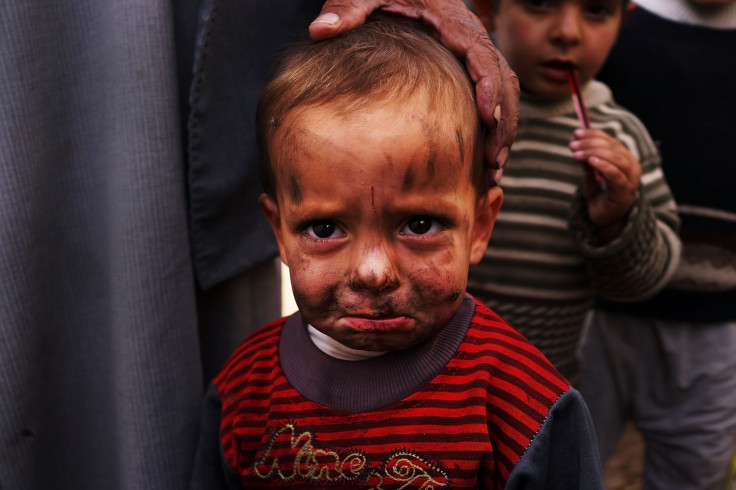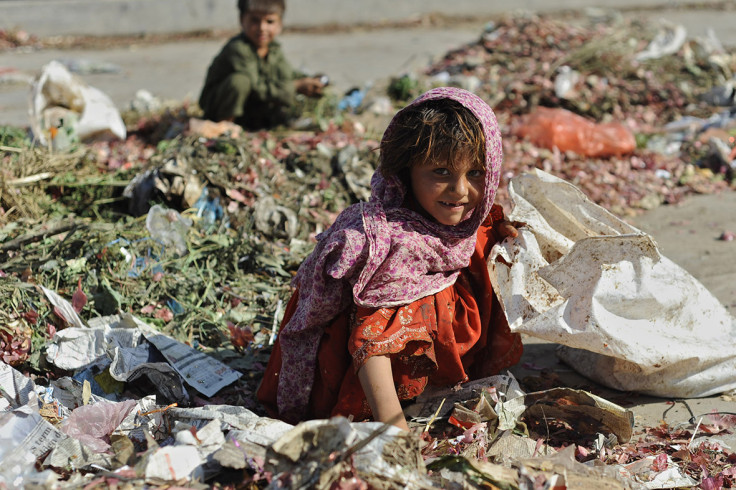Universal Children's Day 2014: Facts, History and Aims of the United Nations Day

Twenty-five years ago the United Nations set up the Convention on the Rights of the Child, a human rights treaty which sets out the political, economic, civil, health, social and cultural rights of children.
Marked annually on 20 November, Universal Children's Day celebrates this historic milestone - which serves as a reminder that much remains to be done for child rights worldwide.
The date also marks the day on which the General Assembly adopted the Declaration of the Rights of the Child in 1959, a series of related children's rights proclamations drafted by Save the Children founder Eglantyne Jebb in 1923.
What is the history behind the declaration?
In December 1954, the Assembly recommended that all countries institute a Universal Children's Day – to be observed as a worldwide understanding of children's rights and needs.
Firstly, the day was established to encourage all countries to institute a day to promote mutual exchange and understanding among children, while initiating action to benefit and promote the welfare of children globally.
Over the decades, the aims of the day have expanded. In 2000, the Millennium Development Goals outlined by world leaders focused on stopping the spread of HIV and Aids by 2015. While it applies to all people, the emphasis remains on preventing the infection of children.
In September 2012, UN secretary-general Ban Ki-moon led the initiative for the education of children. The goals include giving every child the chance to attend school.
Other aims have included eliminating child labour and violence against children, and helping children who are feeling the psychological effects of war or armed conflict.
In spite of the overall gains, there are many children who have fallen even further behind. Old challenges have combined with new problems to deprive many children of their rights and the benefits of development.
From declining infant mortality to rising school enrolment, there is much to celebrate on the 25<sup>th anniversary of the Convention. Yet there is more to be done, as many children are still denied the same entitlements as their peers.

Facts about child rights
According to Unicef as of 2013, there are an estimated 168 million children aged five to 17 worldwide who are involved with child labour.
Every year, there are more than three million reports of child abuse made in the United States alone, involving more than six million children.
Approximately 20% of women and five to 10% of men report being sexually abused as children, while 23% of people report being physically abused as children. Additionally, many children are subjected to emotional abuse – sometimes called psychological abuse – and to neglect.
Every year, there are an estimated 34,000 homicide deaths in children under the age of 15.
Pneumonia is one of the single largest killers of children under five and it is the leading infectious cause of childhood mortality. In 2013, it killed nearly 2,600 children a day.
Education is a great driver of social, economic and political progress. Yet 69 million adolescents – in low-income countries – are receiving no post-primary education. Children are denied an education because of unaffordable costs, gender discrimination, humanitarian crises and child labour.
Female genital mutilation is mainly carried out on girls under the age of 15. According to the World Health Organisation, more than 125 million girls and women alive today have been cut in the 29 countries in Africa and the Middle East where FGM is concentrated.
Each year, 15 million girls are married as children, and denied their right to health, education and opportunity. Some are married as young as eight or nine. One of the most common causes of death for girls aged 15 to 19 in developing countries is pregnancy and childbirth.
By the end of August 2014, the UN estimated 6.5 million people had been displaced in Syria, while more than three million refugees had fled to countries such as Lebanon, Jordan and Turkey - around half of the three million are children.
© Copyright IBTimes 2025. All rights reserved.





















